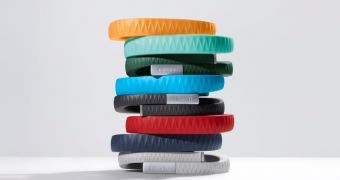Research firm IDC has published a new report, in which it shows that the wearable market is booming and fitness brands such as the Nike+ are the ones driving sales.
Wearabes are the next big thing in tech. You've been hearing it all over and we keep telling you that, because it’s true. Currently brand vendors are racing to provide the best wrist-bound device in terms of functionality, leaving the aesthetically part somewhere in the background.
For now, at least. With the advent of the Motorola Moto 360, we have a feeling that things might change a little bit. But it will take a while before seeing the device arrive in the wild.
So far, Samsung has launched the Gear 2, Gear 2 Neo smartwatches and the Gear Fit health centric fitness band. Both smartwatchs run Sammy’s own Tizen OS platform, which was developed in-house.
Sony on the other hand has unleashed a sports band into the wild, which is pretty simple, but the point is, we’re seeing the whole spectrum and customers have the chance to choose what they want on their wrist.
According to recent information coming from IDC, it is the “complex accessories” that interest customers the most.
What do they mean when they say a complex accessory? Apparently, it’s a device that is able to function on its own, but only gains full functionality when it works in concert with a second device, like a smartphone.
A fitness band can be used to keep tabs on sleep cycle, calories burned or count steps, but it becomes fully functional when you pair a smartphone to it, allowing users to receive notifications and the like.
According to IDC, devices like Nike+, FuelBand, Jawbone UP and Fitbit will become market leaders throughout 2018.
There’s another segment in wearables, called the “smart accessories,” meaning devices that have to be connected to IP-capable products and will allow users to add third-party applications. IDC is probably referring to smartwatches here.
The firm considers that smart accessories aren't really ready for prime-time and forecasts that they will be able to surpass complex accessory shipments by 2018.
The last category envisioned is “smart wearables,” which includes Google Glass and maybe smartwatches capable of placing phone calls and replacing smartphones altogether.
IDC says that in order to succeed with selling these devices, vendors must convince users to shift to a totally new user experience, by providing adaptive third-party applications.
The most recent study conducted by IDC suggests that we are going to see 19.2 million wearable units shipped out throughout 2014. The 2014-2018 Forecast and Analysis suggests that complex accessories are the actual force driving the increase.

 14 DAY TRIAL //
14 DAY TRIAL //